Our Physical Therapy Services in Draper, Utah
Let’s Get You Back to Doing What You Love
At Body Solutions PT, we offer top-quality physical therapy services in Draper, Utah. Our goal is to help you move without pain and do the things you love again. We design your treatment plan around your condition, goals, and lifestyle.
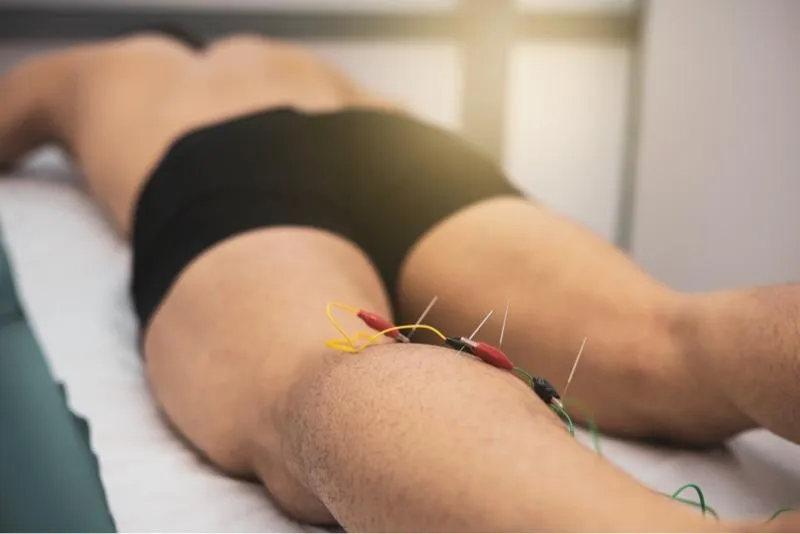
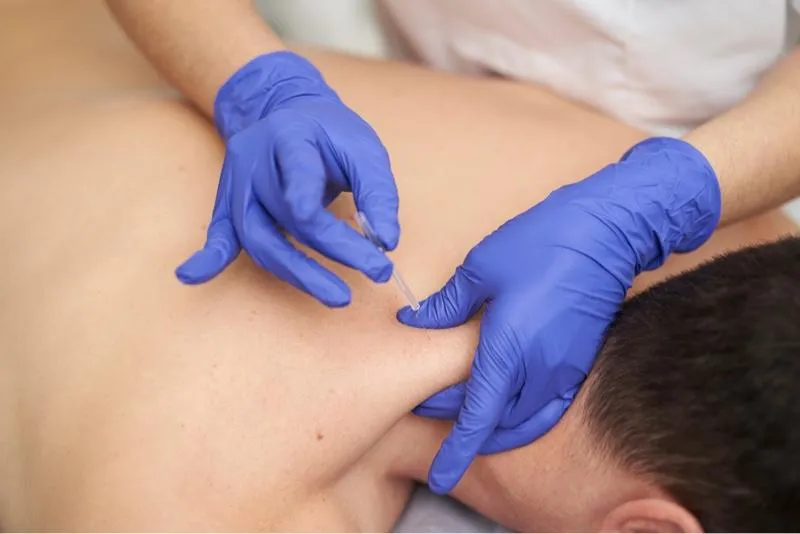
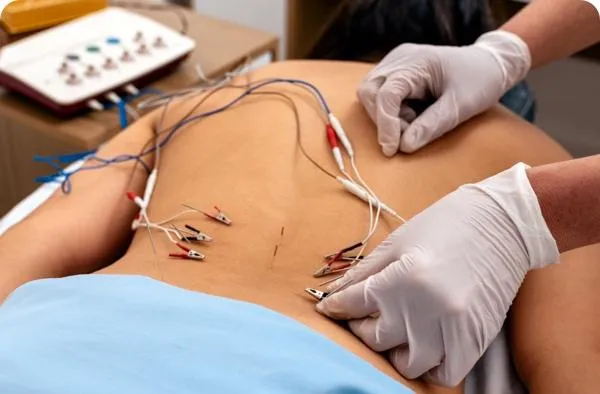
Dry Needling
Dry Needling is a specialized technique that uses thin needles to target and release trigger points within muscles, reducing pain and tension. By focusing on deep muscular knots and tightness, dry needling enhances circulation and promotes healing in the affected areas. This method is especially effective for treating chronic pain, sports injuries, and muscle dysfunction, offering relief and increased flexibility for patients dealing with persistent discomfort.
We use precise dry needling to target tight muscles and trigger points. This reduces pain, improves circulation, and helps your body heal. It’s especially helpful for:
Common Treatments
Knee Osteoarthritis: Eases stiffness and improves joint mobility by reducing muscle tightness around the knee.
Low Back Pain: Targets muscle tension and trigger points to reduce back pain and improve movement.
Back of Shoulder: Targets trigger points to alleviate shoulder pain and improve function.
Hip & Glutes: Addresses tension and pain in the hip and gluteal muscles to enhance range of motion.
Plantar Fasciitis: Relieves foot and heel pain by releasing tension in the plantar fascia.
Lateral Hip and Iliotibial Band (IT Band) Syndrome: Helps alleviate tightness and pain along the outside of the thigh.
Duration & Purpose:
Likely 4-6 sessions, but will vary upon severity and response to treatment.
Increases blood flow
Decreases pain and inflammation
May help with local pain or referred pain
Dry Needling
Dry Needling is a specialized technique that uses thin needles to target and release trigger points within muscles, reducing pain and tension. By focusing on deep muscular knots and tightness, dry needling enhances circulation and promotes healing in the affected areas. This method is especially effective for treating chronic pain, sports injuries, and muscle dysfunction, offering relief and increased flexibility for patients dealing with persistent discomfort.


Common Treatments
Knee Osteoarthritis: Eases stiffness and improves joint mobility by reducing muscle tightness around the knee.
Low Back Pain: Targets muscle tension and trigger points to reduce back pain and improve movement.
Back of Shoulder: Targets trigger points to alleviate shoulder pain and improve function.
Hip & Glutes: Addresses tension and pain in the hip and gluteal muscles to enhance range of motion.
Plantar Fasciitis: Relieves foot and heel pain by releasing tension in the plantar fascia.
Lateral Hip and Iliotibial Band (IT Band) Syndrome: Helps alleviate tightness and pain along the outside of the thigh.
Duration & Purpose:
Likely 4-6 sessions, but will vary upon severity and response to treatment.
Increases blood flow
Decreases pain and inflammation
May help with local pain or referred pain
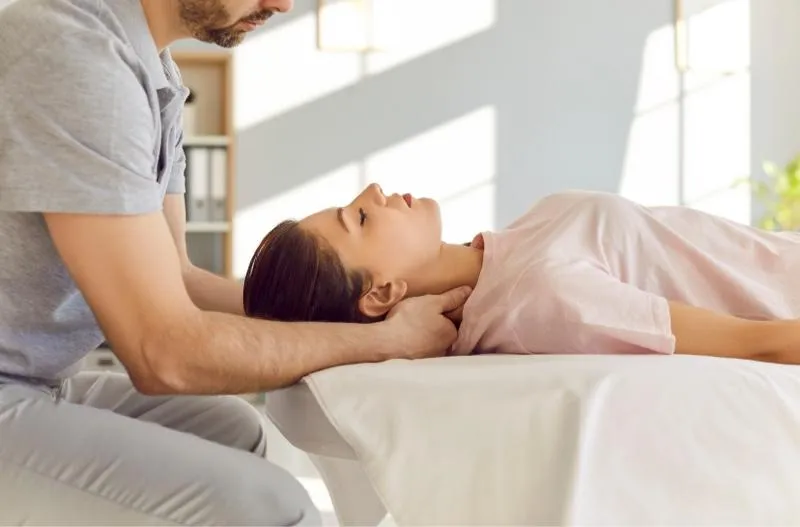
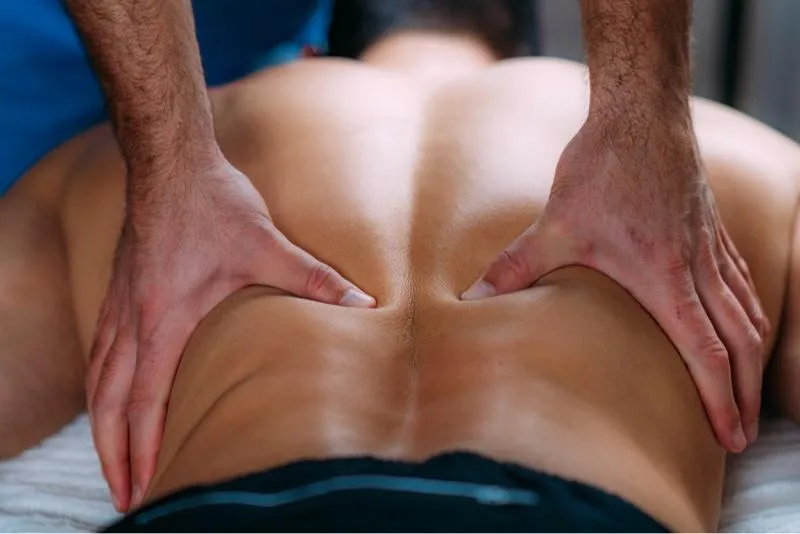
Manual Therapy
Our Manual Therapy services use advanced, hands-on techniques to alleviate pain, improve joint mobility, and restore natural movement patterns. This approach includes a combination of soft tissue mobilization, joint manipulation, and muscle stretching to address pain at its source. Perfect for those suffering from post-surgery stiffness, sports injuries, or chronic conditions, manual therapy promotes healing, reduces recovery time, and helps you regain freedom of movement in everyday life.
Common Treatments
Joint Mobilization for Stiffness: Restores joint movement and reduces pain caused by restricted joints.
Soft Tissue Mobilization for Scar Tissue: Breaks down scar tissue to improve flexibility and reduce pain.
Myofascial Release for Chronic Pain: Eases tension in connective tissue, helping to relieve pain and restore mobility.
Muscle Energy Techniques for Post-Surgery Recovery: Promotes healing and restores strength after surgery.
Manual Stretching for Range of Motion: Improves flexibility and joint mobility through hands-on stretching.
Trigger Point Therapy for Muscle Knots: Relieves painful muscle knots and tension in targeted areas.
Duration:
Manual therapy is used as needed throughout a physical therapy plan of care, typically incorporated in sessions 1-3 times per week, depending on the patient's condition, goals, and response to treatment.
Increases blood flow
Decreases pain and inflammation
May help with local pain or referred pain
Manual Therapy
Our Manual Therapy services use advanced, hands-on techniques to alleviate pain, improve joint mobility, and restore natural movement patterns. This approach includes a combination of soft tissue mobilization, joint manipulation, and muscle stretching to address pain at its source. Perfect for those suffering from post-surgery stiffness, sports injuries, or chronic conditions, manual therapy promotes healing, reduces recovery time, and helps you regain freedom of movement in everyday life.


Common Treatments
Joint Mobilization for Stiffness: Restores joint movement and reduces pain caused by restricted joints.
Soft Tissue Mobilization for Scar Tissue: Breaks down scar tissue to improve flexibility and reduce pain.
Myofascial Release for Chronic Pain: Eases tension in connective tissue, helping to relieve pain and restore mobility.
Muscle Energy Techniques for Post-Surgery Recovery: Promotes healing and restores strength after surgery.
Manual Stretching for Range of Motion: Improves flexibility and joint mobility through hands-on stretching.
Trigger Point Therapy for Muscle Knots: Relieves painful muscle knots and tension in targeted areas.
Duration:
Manual therapy is used as needed throughout a physical therapy plan of care, typically incorporated in sessions 1-3 times per week, depending on the patient's condition, goals, and response to treatment.
Increases blood flow
Decreases pain and inflammation
May help with local pain or referred pain
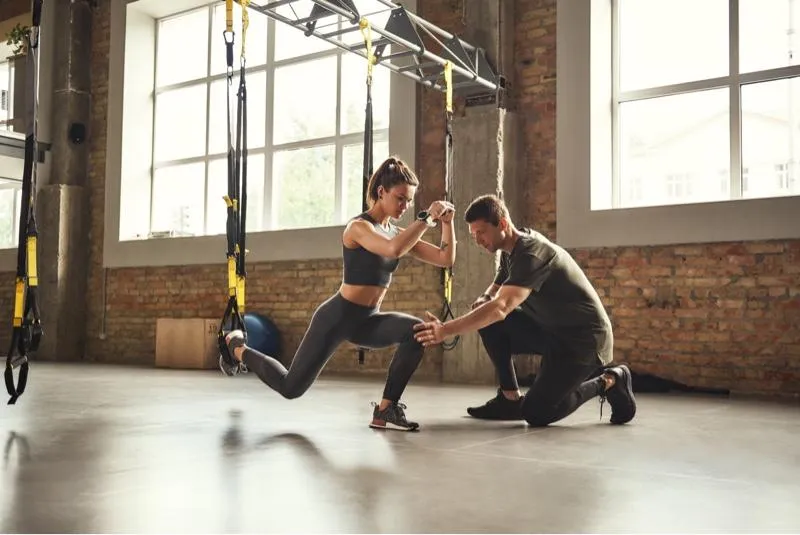

Personal Training
Personal training at our physical therapy clinic offers individualized fitness programs designed to meet your health, strength, and wellness goals. I focus on helping you build a balanced body through a mix of strength, cardiovascular, and flexibility exercises. Whether you're recovering from an injury, working toward a specific fitness goal, or simply aiming to improve your overall health, I’m here to provide guidance, motivation, and support in a safe, controlled environment to help you achieve lasting results.
Common Treatments
Strength Training for Muscle Building: Focuses on building strength and endurance tailored to individual goals.
Cardio Conditioning for Heart Health: Improves cardiovascular fitness and overall stamina.
Functional Movement Training for Daily Activities: Enhances balance, strength, and mobility for everyday movements.
Flexibility Training for Joint Health: Increases flexibility to support full range of motion and reduce stiffness.
Core Stability for Posture Improvement: Builds core strength to improve posture and support the spine.
Injury Prevention for Active Lifestyles: Incorporates exercises designed to prevent common injuries and support physical activity.
Duration & Purpose:
Most personal training program packages typically fall into these common timeframes:
1 Month (4-6 weeks): Short-term programs for goal-specific training or trial periods.
3 Months (12 weeks): Popular duration for achieving measurable progress in strength, endurance, or weight loss.
6 Months: Designed for long-term goals like body transformation or preparing for an event.
12 Months: Comprehensive programs for sustained lifestyle changes or athletic performance improvements.
Personal Training
Personal training at my clinic offers individualized fitness programs designed to meet your health, strength, and wellness goals. I focus on helping you build a balanced body through a mix of strength, cardiovascular, and flexibility exercises. Whether you're recovering from an injury, working toward a specific fitness goal, or simply aiming to improve your overall health, I’m here to provide guidance, motivation, and support in a safe, controlled environment to help you achieve lasting results.


Common Treatments
Strength Training for Muscle Building: Focuses on building strength and endurance tailored to individual goals.
Cardio Conditioning for Heart Health: Improves cardiovascular fitness and overall stamina.
Functional Movement Training for Daily Activities: Enhances balance, strength, and mobility for everyday movements.
Flexibility Training for Joint Health: Increases flexibility to support full range of motion and reduce stiffness.
Core Stability for Posture Improvement: Builds core strength to improve posture and support the spine.
Injury Prevention for Active Lifestyles: Incorporates exercises designed to prevent common injuries and support physical activity.
Duration & Purpose:
Most personal training program packages typically fall into these common timeframes:
1 Month (4-6 weeks): Short-term programs for goal-specific training or trial periods.
3 Months (12 weeks): Popular duration for achieving measurable progress in strength, endurance, or weight loss.
6 Months: Designed for long-term goals like body transformation or preparing for an event.
12 Months: Comprehensive programs for sustained lifestyle changes or athletic performance improvements.
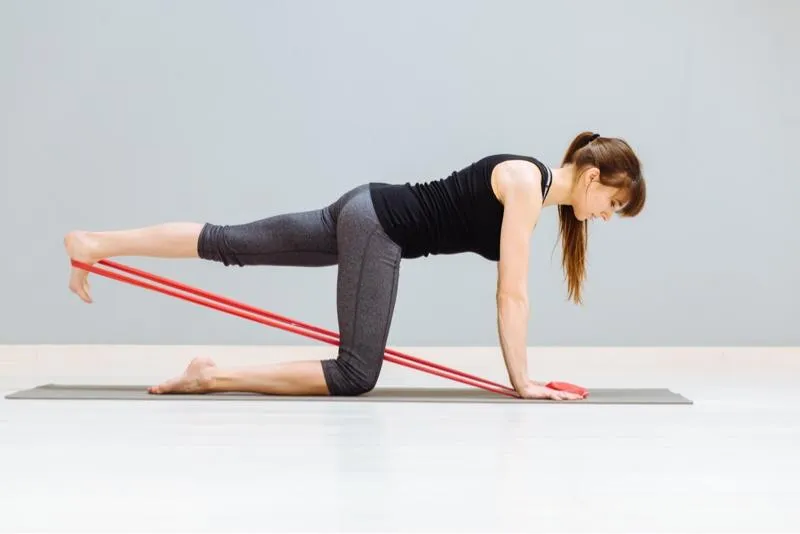
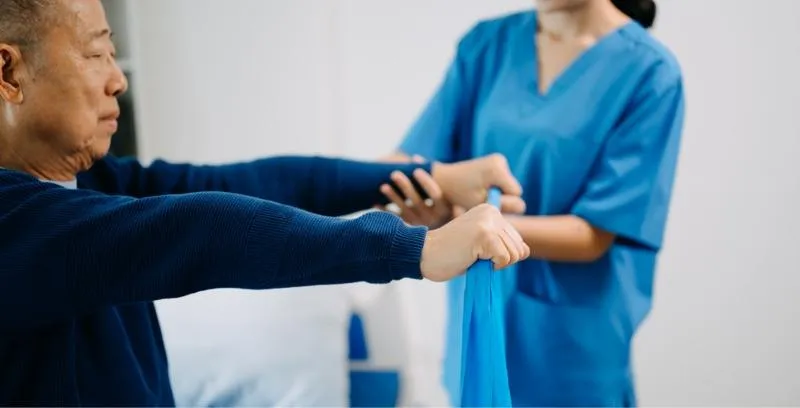
Corrective Exercise
Corrective exercise targets muscle imbalances and poor movement patterns that can lead to injury and discomfort. By analyzing your posture and movement, I design customized exercise programs to address these issues, focusing on core stability, strength, and flexibility. This approach is ideal if you're recovering from an injury, dealing with chronic pain, or looking to enhance your performance. Corrective exercises are a proactive way to prevent future injuries, improve function, and promote long-term physical health.
Common Treatments
Posture Correction for Back Pain Relief: Focuses on correcting poor posture to alleviate back pain and improve alignment.
Core Stabilization for Balance: Builds core strength to support stability and prevent falls or injuries.
Shoulder Mobility for Shoulder Pain: Improves range of motion and reduces pain in the shoulders.
Lower Back Strengthening for Injury Prevention: Targets lower back muscles to reduce the risk of re-injury.
Hip Mobility for Functional Movement: Increases flexibility and mobility in the hips for better movement and reduced discomfort.
Knee Alignment for Joint Stability: Corrects knee positioning to improve joint stability and support overall leg strength.
Duration & Purpose:
Corrective exercises are incorporated into every program when muscle imbalances are identified.
Corrective Exercise
Corrective exercise targets muscle imbalances and poor movement patterns that can lead to injury and discomfort. By analyzing your posture and movement, I design customized exercise programs to address these issues, focusing on core stability, strength, and flexibility. This approach is ideal if you're recovering from an injury, dealing with chronic pain, or looking to enhance your performance. Corrective exercises are a proactive way to prevent future injuries, improve function, and promote long-term physical health.


Common Treatments
Posture Correction for Back Pain Relief: Focuses on correcting poor posture to alleviate back pain and improve alignment.
Core Stabilization for Balance: Builds core strength to support stability and prevent falls or injuries.
Shoulder Mobility for Shoulder Pain: Improves range of motion and reduces pain in the shoulders.
Lower Back Strengthening for Injury Prevention: Targets lower back muscles to reduce the risk of re-injury.
Hip Mobility for Functional Movement: Increases flexibility and mobility in the hips for better movement and reduced discomfort.
Knee Alignment for Joint Stability: Corrects knee positioning to improve joint stability and support overall leg strength.
Duration & Purpose:
Corrective exercises are incorporated into every program when muscle imbalances are identified.
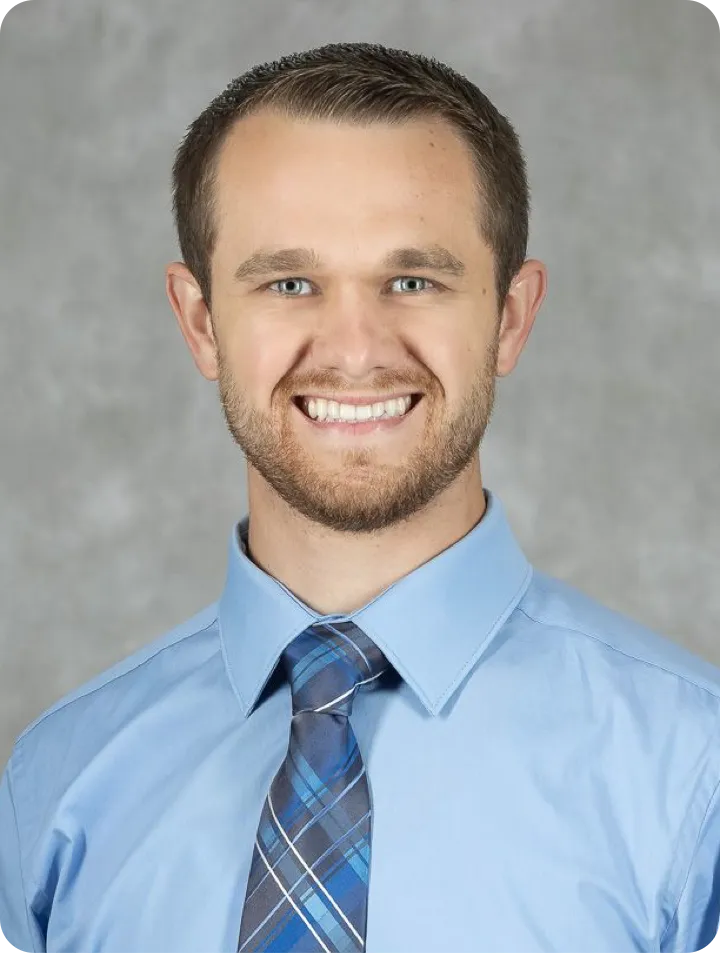
Meet Your Licensed Physical Therapist in Draper
Braydon Lavery
PT, DPT, CPT, CES
I know firsthand how frustrating it feels to be held back by pain and injuries. After competing as a top athlete in high school and college, injuries ended my career as a runner — but they also
inspired me to dedicate my life to helping others get back to the activities they love.
That journey led me to earn my Doctor of Physical Therapy degree and advanced certifications in Personal Training, Corrective Exercise, and Dry Needling. Over the years, I’ve worked with patients of all ages — from athletes to busy parents — to relieve pain, restore mobility, and improve quality of life.
Today, my focus is simple: helping the Draper community move better, recover faster, and live without limitations. Whether you’re struggling with chronic tightness, recovering from an injury, or just want to feel stronger and more active, I’m here to guide you every step of the way.
Client Success Stories
Real Results From Local Patients
Frequently Asked Questions
Dr. Braydon Lavery's training
Dr. Braydon Lavery earned his Doctorate of Physical Therapy degree from South College and is a licensed physical therapist in the state of Utah. Since receiving his license he has become a Certified Personal Trainer (CPT) and a Corrective Exercise Specialist (CES), both from the National Academy of Sports Medicine (NASM). He has also become certified in Dry Needling through the Spinal Manipulation Institute & Dry Needling Institute.
How long is each appointment?
Every appointment lasts 60 minutes and starts on the hour (8am, 11am, 3pm, etc.). Your initial evaluation usually takes about 45-60 minutes depending on the patient's complexity.
What should I wear to my appointment?
If possible, please wear something that you can exercise or move comfortably in as we will perform various exercises and need access to the areas of the body being treated. If you plan on coming from work or some other activity you may consider bringing a change of clothes with you to change in to before and after the appointment. We also have extra shorts and t-shirts that you may use if needed.
Do you accept insurance?
No, this is a cash-based clinic. You will be receive 1-on-1, high-quality services for the duration of your session without being limited by what insurance providers are willing to pay for.
Do you offer package deals/discounts?
Larger packages are great for post surgical care or managing chronic conditions. We will discuss which package would be best for you based on your diagnosis and needs.
3-Session Package (5% off per session)
5-Session Package (10% off per session)
10-Session Package (20% off per session)
15-Session Package (30% off per session)
Do you accept (Health Savings Account) HSA cards?
YES! A Health Savings Account (HSA) is a type of personal savings account you can set up to pay certain health care costs. An HSA allows you to put money away and withdraw it tax free, as long as you use it for qualified medical expenses, like deductibles, copayments, coinsurance, and more. I accept HSA cards as a method of payment, however, you should verify with your institution prior to your scheduled appointment.
What types of injuries or conditions do you treat?
I treat a variety of injuries and conditions, such as muscular and joint pain , sports injuries, pre/post-surgical rehabilitation, and balance and mobility issues.See the Dry Needling section to see common areas treated such as knee osteoarthritis!
Do you perform dry-needling?
YES! When dry needling is applied to an affected muscle or trigger point, it can decrease muscle tightness, increase blood flow and reduce pain. Patients often report immediate relief after treatment. The needles remain in your muscle for a short period of time — between 10 seconds and 20 minutes — during treatment (Mayo Clinic, 2023).
Dry needling is similar to acupuncture but the approach or reasoning behind it is different. Dry needling utilizes a "Western medicine" approach targeting trigger points within muscles rather than the "Eastern medicine" approach that emphasizes moving Chi and energy to heal the body.
Is dry needling painful?
Most people feel only a quick prick during needle insertion. You might experience a muscle twitch or brief soreness, but discomfort is minimal and usually short-lived.
How many sessions will I need?
That depends on your condition, how long you’ve been dealing with it, and how your body responds to treatment. Many patients feel better within 1–3 sessions, while others benefit from a series of 4–6 treatments combined with physical therapy.
Is dry needling safe?
Yes, when performed by licensed professionals like our team at Body Solutions PT. We use sterile, single-use needles and follow strict safety protocols to ensure your comfort and well-being.
What’s the difference between dry needling and acupuncture?
While both use similar needles, dry needling is based on Western anatomical and neurological principles. It targets muscle trigger points, not energy meridians. The techniques and goals are different.
Still have questions? The best way to find out if this treatment is right for you is to try your first session. Appointments this week are available — book now.

PERSONAL TRAINING
RESOURCES
FOLLOW US
Copyright © 2024 Body Solutions PT - All Rights Reserved.
































Facebook
LinkedIn